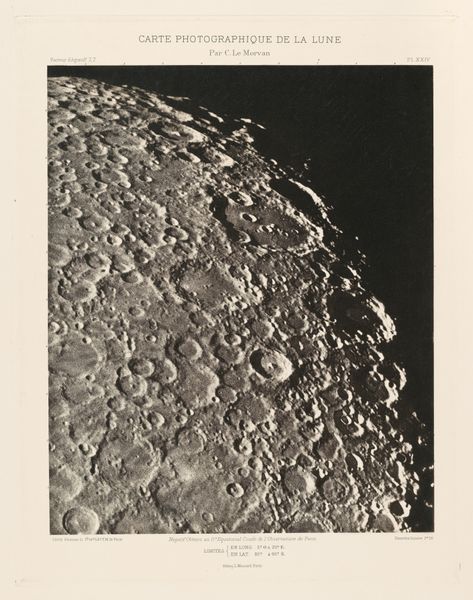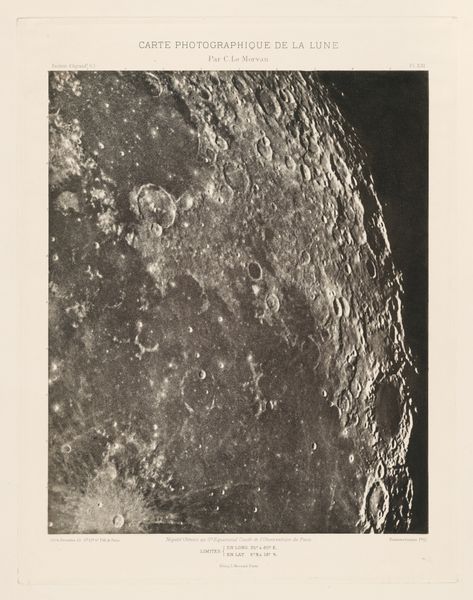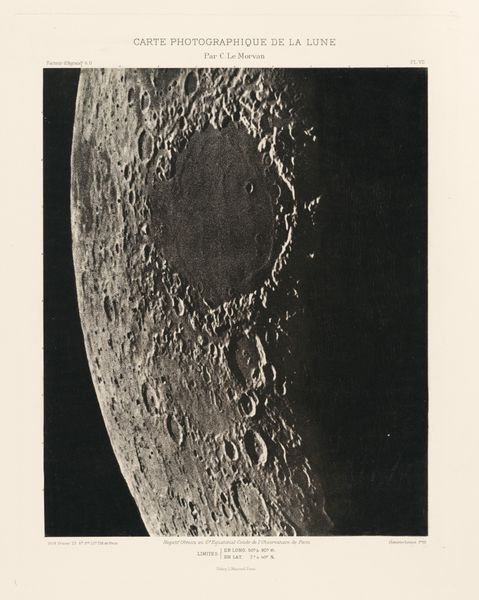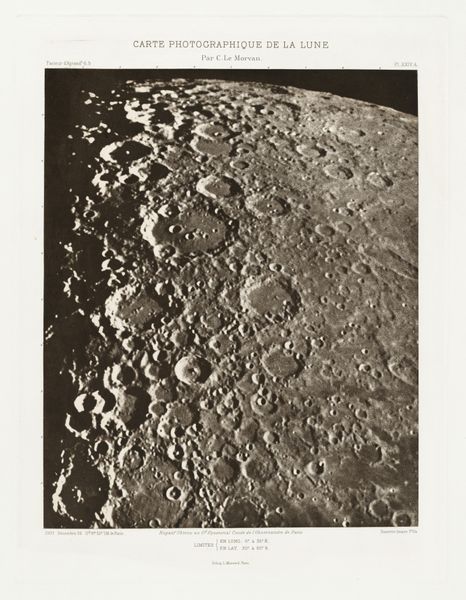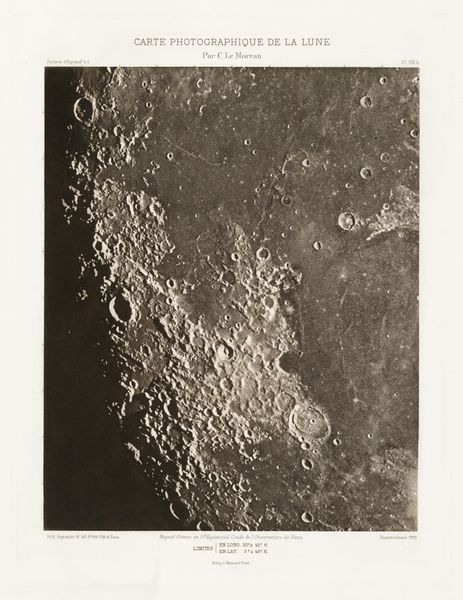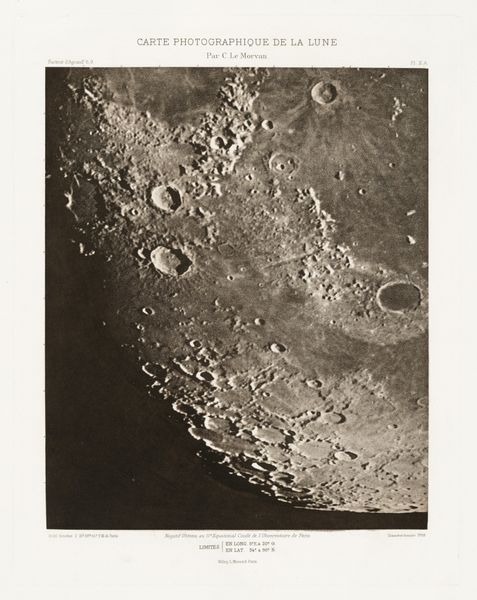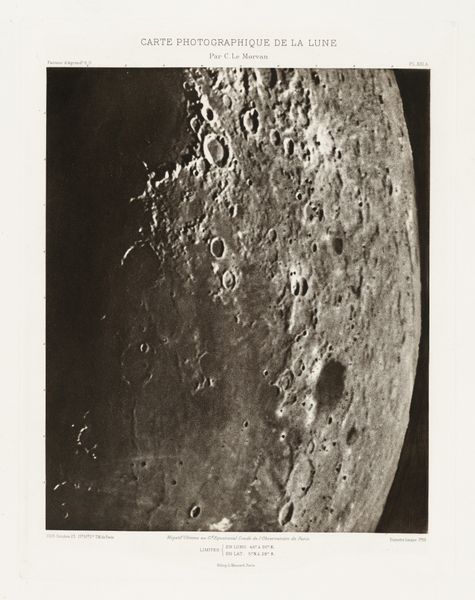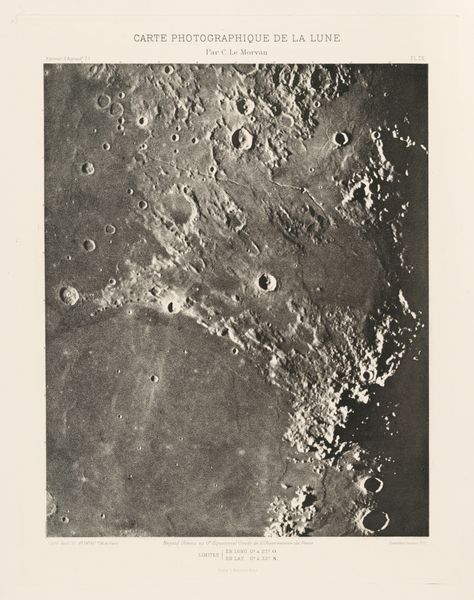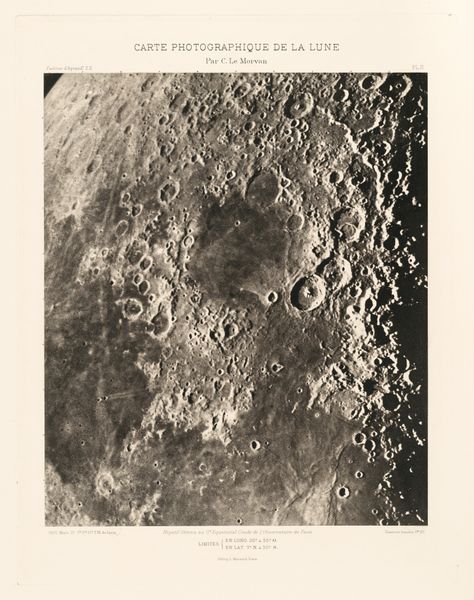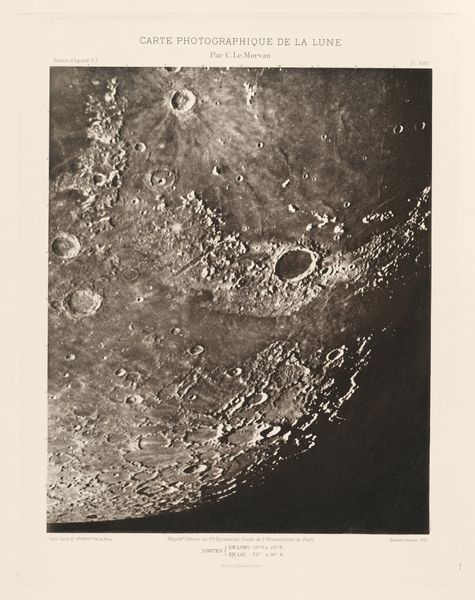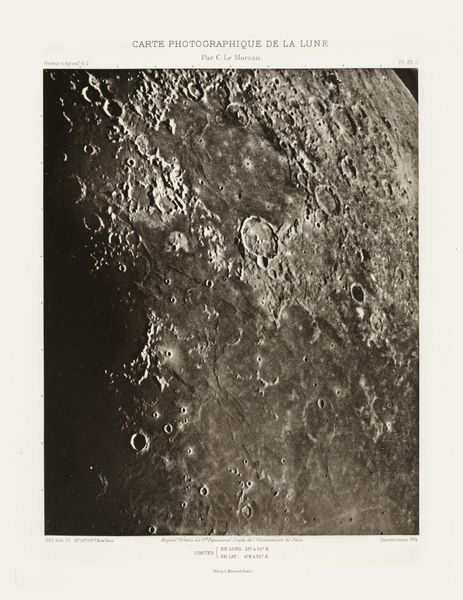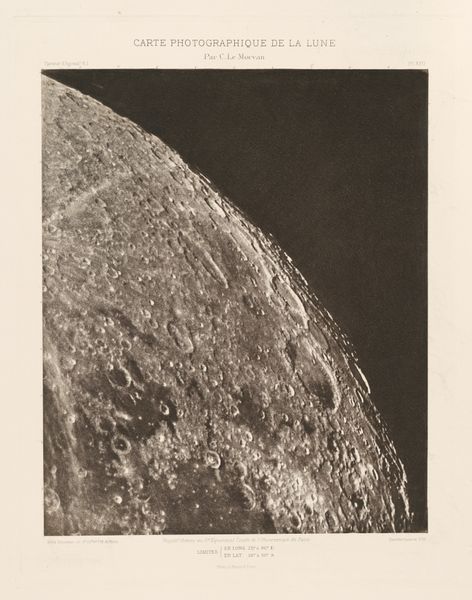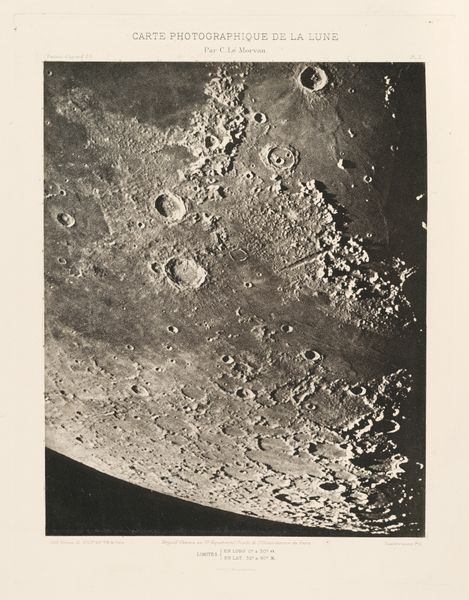
Carte photographique de la lune, planche XXIII (Photographic Chart of the Moon, plate XXIII) Possibly 1899 - 1914
0:00
0:00
print, photography
# print
#
landscape
#
photography
Dimensions: image: 31.1 × 25.5 cm (12 1/4 × 10 1/16 in.) plate: 38.9 × 29.5 cm (15 5/16 × 11 5/8 in.) sheet: 49 × 37.9 cm (19 5/16 × 14 15/16 in.) tissue: 42.55 × 37.47 cm (16 3/4 × 14 3/4 in.)
Copyright: National Gallery of Art: CC0 1.0
Charles Le Morvan made this photographic chart of the moon sometime between 1865 and 1933, using photography to document its surface. I love to look at it, thinking of the painstaking process, the artist working away in monochrome. There’s something about the texture, the way the craters catch the light and shadow, that feels incredibly tactile. You can almost feel the grit and dust, the cold, silent vacuum. It's hard to believe this isn't a drawing, a work of the hand. Look at the upper right corner, where the light stops; it's such a contrast to the pitted surface. The depth of field gives the illusion of the spherical; it's so different to a painting because of the lens. I wonder how they felt about this new kind of image making? For me, this plate echoes the graphic work of someone like Vija Celmins. Both artists share that same dedication to the surface and the subtle, quiet beauty of shades of gray. This feels like a real conversation across time.
Comments
No comments
Be the first to comment and join the conversation on the ultimate creative platform.
